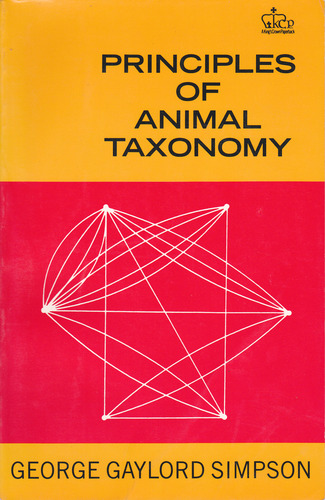Principles of animal taxonomy book
Par petersen william le mercredi, février 3 2016, 20:30 - Lien permanent
Principles of animal taxonomy. George Gaylord Simpson

Principles.of.animal.taxonomy.pdf
ISBN: 023109650X,9780231096508 | 131 pages | 4 Mb

Principles of animal taxonomy George Gaylord Simpson
Publisher: Columbia University Press
This method of classification has changed over time to reflect and accommodate current thinking in science, but primarily the principle has remained unchanged, grouping animals based on shared characteristics. The end result was a classification of existing 'data assets' into three main types of animals (although I would later argue the animals were really different zoos.) From this I During the UX design a fundamental principle was data integrity. Okay, so I was talking about FPJ 140 or ZOO 140 (Animal Taxonomy). Each recently discovered new animal or prodigious being became understandable and inserted in the common system for once as soon as its anatomy was described and, first of all, depicted. The system that we still use today for giving scientific names to plants and animals has many founders, from the Greek philosopher Aristotle to the Swedish physician and botanist Carolus Linnaeus. While he continued throughout his lifetime to revise and expand this great work, so his successors have continued to revise the principles of taxonomy, now according to genetic principles, informed by the analysis of DNA. The principle behind the method is illustrated in Figure 1, which shows a single species splitting into two independently evolving populations that gradually diverge over time. [that] are designed to enable zoologists to arrive at names for taxa that are correct under particular taxonomic circumstances. Comparison of exotic horn types The heroic age of biological taxonomy is long over, but anatomy as an explanatory principle is still able to take over with a special convincing force any wonderful being from the world of legends to our one. Simpson GG (1961) Principles of Animal Taxonomy. Yeah, it is difficult but it is not boring at all. The basic method of classifying the organisms has been the taxonomy. Most think that taxonomy is boring and difficult. The same principle has been applied to understand the enormously diversified biological organisms, mainly animals and plants. Cuvier's The Animal Kingdom, Arranged According to its Organization, Serving as a Foundation for the Natural History of Animals, was an attempt to classify the animal kingdom on the basis of comparative anatomy, of which Cuvier's entire classification schema was Using these principles, Cuvier established a taxonomic approach based on comparative anatomy that established correlations between the inner systems that maintained life within an organism. Species conservation and systematics: the dilemma of subspecies.